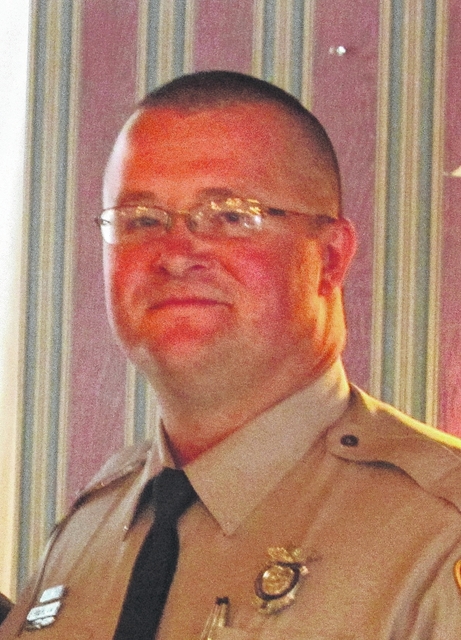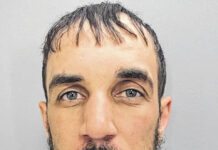LUMBERTON — Impairment, speeding and not wearing a seat belt are the driving factors behind the high number of fatalities on Robeson County roads.
That was the message of Highway Patrol Trooper Brian Strickland when he spoke to members of the Lumberton Rotary Club during a presentation this week called “Arrive Alive.”
So far this year, the Highway Patrol has responded to 21 traffic fatalities, down from 30 this time last year. The Highway Patrol handled 32 fatalities in 2014 and 51 in 2015. In 2014, Mecklenburg County had the most traffic fatalities in North Carolina, with 69.
Along with the number of fatalities, citations issued by troopers for impaired driving, speeding and not wearing seat belts also increased from 2014 to 2015. Speeding citations went up by about a third.
A third of fatal crashes in Robeson County in 2014 involved alcohol, according to the North Carolina Department of Transportation.
Strickland, who has been a trooper more than eight years, stressed that impaired driving also includes driving while on medication. He said prescription abuse is on the rise in Robeson.
“Most of you know we have a problem with the abuse of medication,” he said, “and that falls under the lines of impaired driving, not just alcohol — medication, alcohol and other drug substances. Medications have side effects. Make sure you are aware of the side effects and that some medications are impairing.”
The increase in citations could in part be due to stepped-up enforcement. Troopers ran more license plates in 2015 than they did in 2014, and initiatives via the Governor’s Highway Safety Program are cracking down on driving while impaired and drivers not using seat belts.
Strickland also said lower gas prices are putting more motorists on Robeson County’s roads. Fifteen percent of collisions in Robeson happen on interstates, 23 percent on state highways and 50 percent on secondary roads, he said.
Times when motorists are heading to and from work see the most wrecks; collisions increase on average by 10 percent from 8 to 10 a.m. and from 4 to 6 p.m.
Strickland also said following too closely contributes to many Robeson wrecks and said motorists should leave at least one car length between their vehicle and the one in front of it for every 10 mph they are traveling. At 30 mph, it takes 89 feet to stop a car, considering reaction time and how long it takes to brake, Strickland said. At 70 mph, that increases to 348 feet, or 23 car lengths.
When it comes to not wearing seat belts and driving while impaired, Strickland said the Highway Patrol deals with many repeat offenders. It’s difficult to get drivers to break the sometimes lifelong habit of not wearing a seat belt — working in schools and in the community is integral to getting people to change their behavior as early as possible, he said.
According to the Centers for Disease Control, seat belts saved 12,802 lives in 2014, reducing crash-related injuries and deaths by about half.
In North Carolina, drivers and front seat passengers can be ticketed for not being belted, whereas rear seat passengers can only be ticketed for seat belt use if the vehicle has been pulled over for another reason.








